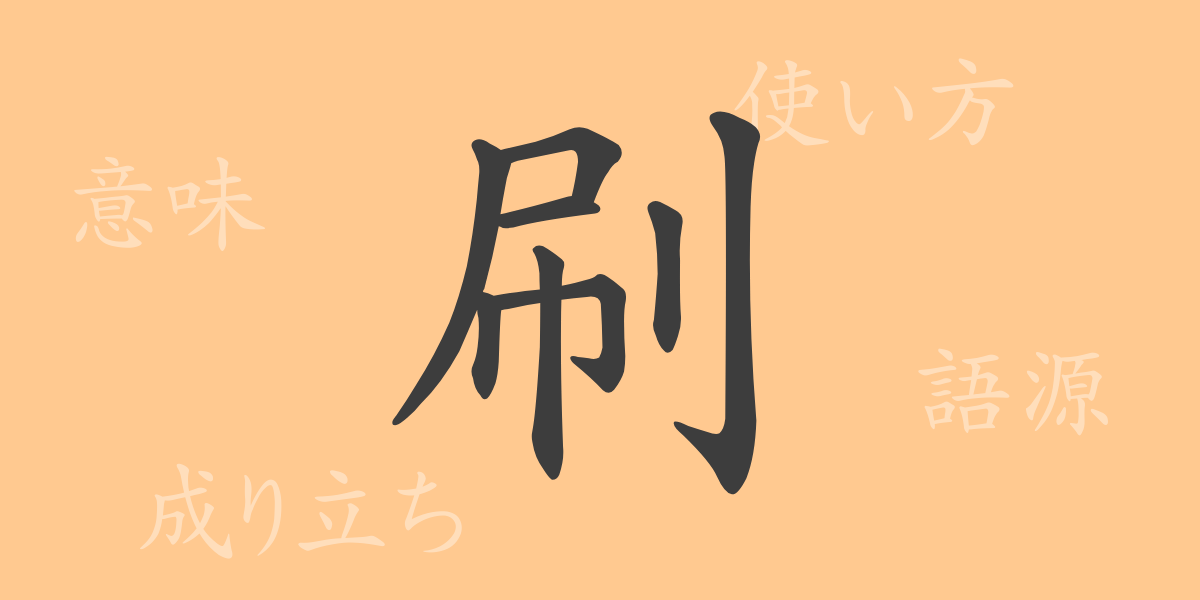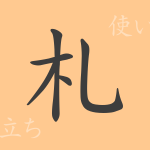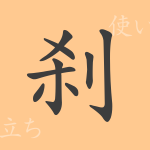The rich culture of Japan is deeply imbued with numerous kanji characters. Among them, “刷” (さつ, satsu) is a character deeply rooted in our daily lives, frequently used in fields such as printing and publishing. This article focuses on the common kanji “刷,” delving into its origins, meanings, usage, and various idioms and expressions associated with it. By understanding the history and culture behind each kanji, we can appreciate the rich world view that words encapsulate.
Origin of 刷 (さつ, satsu)
The kanji “刷” (さつ, satsu) originates from ancient Chinese printing techniques. Initially, it meant “to rub” or “to scrape,” derived from the act of rubbing ink onto woodblocks during woodblock printing. This action evolved to mean “to print,” and the verb “刷る” (する, suru) came to be used in the context of printing. Over time, “刷” came to signify not only printing but also actions like repeated performance or instilling something deeply.
Meaning and Usage of 刷 (さつ, satsu)
The primary meaning of “刷” (さつ, satsu) is “to print,” but it also includes “to repeat an action.” For instance, expressions like “版を刷る” (はんをする, han o suru) meaning “to print a plate,” or “心に刷り込む” (こころにすりこむ, kokoro ni surikomu) meaning “to engrain in the heart,” demonstrate its usage in both physical and psychological contexts. Additionally, the word “刷新” (さっしん, sasshin) means to create something new or to reform, reflecting the nuanced meaning of “changing something” that “刷” (さつ, satsu) carries.
Readings, Stroke Count, and Radical of 刷 (さつ, satsu)
The kanji “刷” (さつ, satsu) has several notable features.
- Readings: The on’yomi (音読み) reading is “サツ” (satsu), and the kun’yomi (訓読み) readings include “す.る” (su.ru), “-ず.り” (zu.ri), “-ずり” (zuri), and “すり” (suri).
- Stroke count: “刷” (さつ, satsu) consists of 8 strokes in total.
- Radical: The radical is “刂” (りっとう, rittou), which represents a knife or blade, categorizing it with other kanji related to cutting or sharp instruments.
Idioms, Phrases, and Proverbs Using 刷 (さつ, satsu) and Their Meanings
There are numerous idioms, phrases, and proverbs incorporating “刷” (さつ, satsu). Here are a few examples:
- 新刷 (しんさつ, shinsatsu): Refers to a newly printed edition.
- 重刷 (じゅうさつ, juusatsu): Means to print repeatedly with the same plate, or the printed material itself.
- 校刷 (こうさつ, kousatsu): The process of proofreading and correcting before printing.
- 版刷り (はんずり, hanzuri): Printing multiple works using a woodblock or plate.
- 心に刷り込む (こころにすりこむ, kokoro ni surikomu): To deeply imprint or engrain something in one’s mind through repetition.
These expressions are often used not only in the context of printing but also in situations involving psychological influence and repetitive actions.
Conclusion on 刷 (さつ, satsu)
The kanji “刷” (さつ, satsu) plays a crucial role in the Japanese language due to its wide range of uses and historical background. Originating with the evolution of printing technology, it has become an indispensable means of conveying information in the modern world. Additionally, its usage extends to mental influence and repeated actions, showcasing its versatility. Through this article, we hope you can appreciate the diverse facets of “刷” (さつ, satsu) and gain a deeper understanding of the rich world of Japanese language.

























